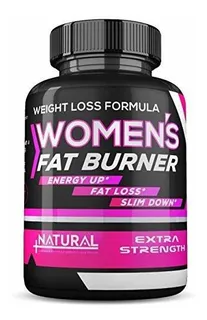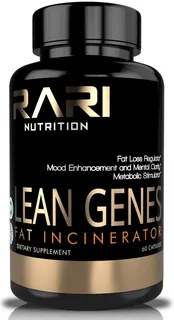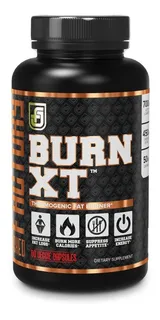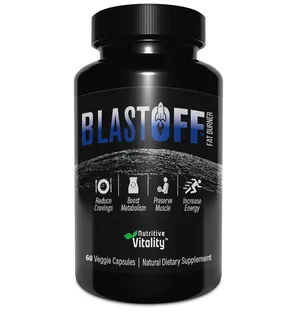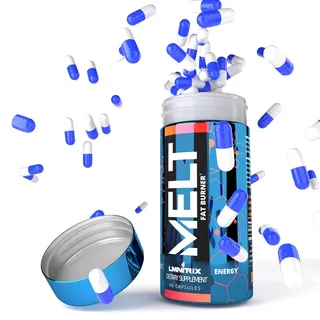Weight Watchers Bowling Green Ohio
Abstract
Objective:
To test the hypothesis that a novel weight loss approach that combined the fundamental components of professionally delivered behavioral weight loss (BWL) treatment with the existing Weight Watchers (WW) program would produce better weight losses than WW alone no differences were expected between the novel treatment and BWL alone.
Design and Methods:
Participants were 141 overweight and obese adults (90% women, 67% non-White, mean age = 49.7 ± 9.2 years, mean body mass index = 36.2 ± 5.5 kg/m2) randomly assigned to 48 weeks of BWL, 48 weeks of WW, or 12 weeks of BWL followed by 36 weeks of WW [combined treatment (CT)]. Assessments were conducted at baseline and weeks 12, 24, and 48, with weight change as the primary outcome.
Results:
Linear mixed model analysis showed that 24-week weight losses did not differ significantly between treatment groups; however, weight losses at 48 weeks were greater in the WW group (M = −6.0 kg, standard error (SE) = 0.8) compared with the CT group (M = −3.6 kg, SE = 0.8; P = 0.032), with BWL not significantly different from either (M = −5.4 kg, SE = 0.8). Further, a greater proportion of WW participants lost 10% of baseline weight by 48 weeks compared with BWL or CT (36.7%, 13.0%, and 15.2%, respectively, P < 0.05).
Conclusion:
This study shows that the WW program can produce clinically meaningful weight losses and provides no evidence that adding brief BWL to the WW program improves outcome.
Introduction
More than two-thirds of adults in the United States are classified as overweight or obese ((1)). Given the health impact of obesity ((2), (3)), development of effective and accessible weight loss programs is an important objective. Professionally delivered, group-based, face-to-face behavioral weight loss treatment (BWL) is considered the state-of-the-art approach for nonmedical treatment of moderate overweight and obesity. The most effective programs, typically delivered in academic medical centers in the context of research trials, achieve clinically significant weight losses of 10% of starting weight by teaching diet and exercise modification and emphasizing behavioral skills such as self-monitoring, stimulus control, and goal-setting ((4-6)). However, because these treatments are generally offered through research programs, they have limited accessibility to the millions of Americans trying to lose weight, and thus, a relatively narrow impact on the obesity epidemic.
To address the concern regarding the limited availability of BWL, researchers have investigated various methods of dissemination such as delivering treatment via telephone ((7)), television ((8)), and the internet ((9), (10)). Results of these studies demonstrate that while media-based alternatives to BWL can be implemented in different settings and modalities, average weight losses are less than those obtained in face-to-face treatment and are comparable with those achieved through commercial weight loss programs that reach the broader public ((11), (12)).
Weight Watchers (WW) International is the largest commercial weight loss program in the United States and provides weight loss services to countries world-wide ((13)). The WW program is behaviorally oriented and focuses on modifying diet and increasing physical activity to produce weight loss. Weekly meetings are held in an open group format (in which group membership may vary week to week) and peer-led by a WW Lifetime member who has successfully completed the program and received training from the company. Several investigations have been conducted to evaluate outcomes of the WW program ((11), (12), (14-18)). An observational study conducted in the United Kingdom (UK) of over 29,000 National Health Service (NHS) referrals for overweight and obese adults to 12 sessions of WW revealed a median weight loss of 2.8 kg (or 3.1% of starting weight), with one-third of all referrals achieving a 5% weight loss ((14)). In a randomized 12-week trial of patients recruited through the English NHS, Jolly et al. ((18)) compared three commercial and three primary care-based weight loss programs to a minimal intervention control. In that study, participants randomized to WW and another commercial program (Rosemary Conley) lost significantly more weight than control participants at end of treatment (−4.4, −4.2, and −2.0 kg, respectively), but the primary care-based programs did not (weight losses ranging from −2.4 to −1.4 kg). At 1-year follow-up, only the WW group had greater weight loss than the control group (−3.5 kg vs. −1.1 kg). In addition, a multisite trial of patients recruited through primary care practices in Australia, Germany, and the UK ((12)) showed that individuals randomized to WW lost significantly more weight than those assigned to standard care delivered by a primary care professional (−4.1 kg vs. −1.8 kg at 12 months). Finally, studies comparing individuals randomized to WW to those losing weight on their own have shown greater mean weight losses following WW ((11), (16)), whereas other studies comparing WW to alternative commercial approaches such as the Atkins, Zone, and Slim-Fast plans have found no significant differences in weight losses across programs ((15), (17)).
Popularity and accessibility are important strengths of commercial programs like WW. However, available data suggest that weight losses achieved through WW are modest relative to professionally delivered programs. Some research has investigated strategies for improving weight loss outcomes of the WW program by combining it with individual phone counseling ((19)). These results suggest that WW may produce greater weight losses when combined with another treatment approach. However, individualized phone calls are a time consuming and expensive addition and thus may not be feasible to maintain in a commercial program that provides services to so many members.
Thus, we propose a novel approach that offers a brief course of BWL followed by the WW program. This combined approach is expected to enhance weight loss outcomes of the WW program in several ways. First, brief BWL is able to achieve significant weight loss and studies show that the amount of weight lost during the initial weeks of treatment is a significant predictor of longer term weight loss ((20), (21)). Wadden et al. ((21)) showed that weight loss achieved as early as 8 weeks into BWL was significantly correlated with weight loss at 1-year follow up. Further, in a study by Nackers et al. ((20)), individuals who lost ≥0.68 kg/week during the first month of a lifestyle intervention were five times more likely to achieve a 10% weight loss at 18 months compared with individuals who lost <0.23 kg/week during the first month of treatment. Therefore, we expected that getting participants off to a strong start with brief BWL would increase overall weight losses in the combined treatment (CT) approach. Second, BWL is provided in a closed group format in which the same members attend each week. This format is expected to foster group cohesion and improve accountability and attendance among members, thereby improving weight losses. Third, BWL groups are led by professional staff with expertise in weight loss and behavior change. Group leaders follow a structured protocol to teach behavioral skills needed to manage weight such as self-monitoring, goal-setting, problem solving, and stimulus control. Participants are given specific calorie and physical activity goals and are asked to self-monitor their eating and activity daily and turn their records in each week for review by the group leader. Physical activity is an essential component of BWL and the importance of meeting physical activity goals for successful weight loss and weight loss maintenance is emphasized. These elements of BWL have been associated with improved weight loss outcomes ((4), (22-24)) and thus are expected to enhance weight losses in the combined group compared with WW alone. Although transitioning from brief BWL to WW may be difficult, we expect that the similarity in nutritional messages between the two approaches combined with an orientation to WW before the point of transition will facilitate this process. Finally, while we recognize that brief BWL is not generally available to the public thereby limiting the accessibility of the combination treatment, we propose this approach as a first test of whether it may be an effective strategy for enhancing weight loss outcomes of the WW program. If superior to WW, future studies would be needed to examine methods for increasing access.
In sum, the purpose of the current study was to evaluate a novel weight loss treatment approach in which participants received brief BWL for 12 weeks followed by WW for 36 weeks. This novel CT was compared with 48 weeks of WW alone and 48 weeks of BWL. The primary aim was to examine weight losses across groups. We hypothesized that CT would achieve greater weight losses at 24 weeks and 48 weeks compared with WW alone. Weight losses between CT and BWL were not expected to differ significantly. Secondary aims were to compare the treatment groups on attendance, daily energy (kcal) intake, and physical activity.
Methods
Participants
Participants were recruited through newspaper advertisements from the New York City metropolitan area between October 2008 and January 2010. Eligible individuals were between the ages of 30-65 with a body mass index (BMI) of 27-50 kg/m2 who had obtained written approval to participate in a weight loss program from their health care provider. Individuals were ineligible if they were currently participating in a weight loss program or taking weight loss medication, participated in a weight loss program in the last year, participated in WW in the last 2 years, took weight loss medication in the last 6 months, lost ≥5% of body weight in the last 6 months, had or were planning to have bariatric surgery for weight loss, or reported contraindications to unsupervised physical activity. Women who were pregnant, lactating, less than 6 months postpartum, or planning to become pregnant also were not eligible. Individuals reporting uncontrolled hypertension, a history of coronary heart disease, stroke, peripheral arterial disease, hepatitis B or C, cirrhosis, HIV, type 2 diabetes requiring medical therapy that increases the risk of hypoglycemia, cancer within the last 5 years, or significant psychiatric illness were excluded.
Procedure
A total of 625 individuals were screened by phone (Figure 1). Individuals who were initially eligible based on the phone screen were invited to a group orientation meeting where additional information about the study was provided and informed consent was obtained. Consenting individuals attended a screening visit in which an individual behavioral interview was conducted and height and weight were obtained to ascertain final eligibility. Eligible participants were then randomly assigned to BWL, WW, or CT. All treatments were provided at no cost to participants.

Flow of participants.
Baseline questionnaires were completed before the start of treatment and baseline weight was obtained at the first group meeting (the WW group attended an initial group meeting in which they were told their treatment assignment, given WW information, and weighed). Additional assessments were conducted at 12 weeks, 24 weeks, and 48 weeks by research assistants blinded to treatment assignment. At assessment visits, self-report questionnaires were completed and participants were weighed. Participants received $20 for completing assessment visits. This study was approved by the institutional review board at Baruch College of the City University of New York.
Treatment conditions
Behavioral weight loss treatment
Participants randomized to BWL received group-based BWL treatment for 48 weeks. Treatment followed a structured protocol modeled after that used in the Program to Reduce Incontinence by Diet and Exercise, a large two-site randomized clinical trial of a BWL intervention for overweight and obese women with urinary incontinence ((25)). The goal was to lose 1-2 pounds/week for a total weight loss of 10% of initial weight. Participants met in closed-groups of ∼15 for 60-min sessions once weekly for the first 24 weeks and every other week for the following 24 weeks. Groups were led by the principal investigator (A.M. Pinto) who has a Ph.D. in clinical psychology and expertise in BWL treatment. Participants were weighed individually before each group meeting. The dietary goal was a moderately reduced-calorie diet of 1,200-1,500 kcal/day (for individuals ≤ 250 pounds) or 1,500-1,800 kcal/day (for individuals >250 pounds) with no more than 25% of total daily calories coming from fat. The physical activity goal was to gradually increase activity (e.g., brisk walking or activities of similar intensity) to 200 min per week. In addition, participants were given pedometers and encouraged to gradually increase total daily steps to 10,000. Between group sessions, participants were instructed to record daily food intake, calories and fat, and physical activity; these records were reviewed weekly by the group leader. Behavioral skills (such as self-monitoring, goal setting, problem solving, stimulus control, and relapse prevention) were emphasized throughout the program.
Weight Watchers
Participants randomized to WW received vouchers to attend WW meetings free of charge for 48 weeks. They chose meeting times and locations that were convenient for their schedule and were told not to reveal to the WW staff that they were participating in a research study. Participants were instructed to follow the WW program and consult with their WW leader as needed to achieve their weight loss goals.
WW is a behaviorally oriented weight loss program that includes four central components: a food plan, an activity plan, a behavior modification plan that uses cognitive restructuring, and group support. WW promotes a nutritionally balanced, moderate energy deficit diet, and regular physical activity for a weight loss of 1-2 pounds/week. During the study time frame, WW offered the Momentum plan, which encouraged consumption of "filling foods" like lean proteins, dairy, whole grains, and fruits and vegetables, and used the POINTS system to facilitate adherence to a hypocaloric food plan. Behavioral skills such as self-monitoring and goal-setting were encouraged and members were provided with booklets to record food intake and physical activity. WW meetings are 30-45 min in length and are conducted in an open-group format such that member attendance varies on any given week. Before each meeting, there is a confidential one-on-one weigh-in. Meetings are led by a WW Lifetime Member who has achieved and maintained a BMI of 20-25 kg/m2 and has successfully completed a leader skills training course. Members are instructed to attend weekly meetings until they reach their weight loss goal and at least monthly meetings once they become Lifetime Members. In addition to in-person meetings, participants randomized to WW had access to eTools, a supplemental online resource that includes a system for tracking food and activity points and weight, recipe ideas and shopping lists, online discussion boards, and articles on weight-related topics.
Combined treatment
Participants randomly assigned to the CT group attended 12 weeks of BWL followed by 36 weeks of WW. Thus, for the first 12 weeks, participants met weekly in closed groups of ∼15 for 60-min sessions (led by A.M. Pinto). The BWL curriculum was condensed to fit within the 12-week time-frame so that the key behavioral strategies for weight loss were taught. Participants were weighed individually before each group meeting and were given the same dietary, physical activity, and weight loss goals as BWL. Participants in this group also received pedometers and were encouraged to gradually increase total daily steps to 10,000. Between group sessions, participants were instructed to record daily food intake, calories and fat, and physical activity; these records were reviewed weekly by the group leader. The final two sessions were designed to facilitate the transition to WW and included a discussion of the similarities and differences between BWL and WW as well as an orientation to the WW website so participants could locate meetings and resources. Following 12 weeks of BWL, participants were instructed to enroll in a WW center convenient to their schedule and follow the WW program to continue with their weight loss goals for the remainder of the treatment period. They were told not to reveal to the WW staff that they were participating in a research study. Like the WW group, they received vouchers to attend meetings free of charge and were given access to the eTools online resources.
Outcome measures
The primary outcome was weight change at 24 and 48 weeks. Secondary outcomes were meeting attendance, daily kilocalories (kcal) consumed, and weekly kcal expended through physical activity at 24 and 48 weeks. Use of eTools was ascertained in the WW and CT groups. Treatment-related costs also were assessed.
Demographic information
Demographic information including age, gender, race, and ethnicity was obtained at baseline.
Weight and height
Weight was measured in street clothing, without shoes, on a calibrated scale (Tanita, BWB-800). Height was measured at the screening visit only using a wall-mounted stadiometer. BMI was computed as kg/m2.
Attendance
For the BWL group, observed attendance was recorded at each group meeting. For participants attending WW, program weigh-in booklets (in which meeting attendance was documented by WW staff) were collected at each assessment visit. Self-reported treatment meeting attendance also was obtained at each assessment visit.
Dietary intake
Total daily energy intake was measured in kcal using the Block Food Frequency Questionnaire (Block FFQ) ((26)) modified for a 3-month time-frame. The Block FFQ has been validated against 4-day food records ((27)) and 24-h recalls ((28)).
Physical activity
The Paffenbarger Activity Questionnaire ((29)) was used to estimate kcal expended per week in overall leisure activity (e.g., number of stairs climbed, number of blocks walked) and in light (5 kcal/min), medium (7.5 kcal/min), and high (10 kcal/min) intensity activity.
eTools use
Participants attending WW were asked to report their frequency of eTools use at each assessment visit.
Costs
Costs of delivering the 48-week BWL program and the 12-week BWL component of the CT program were computed. Included in these estimates were costs of staff time required to deliver the treatment (e.g., prepare for and conduct group, conduct individual weigh-ins, review diaries) and cost of treatment materials (e.g., lesson binders, pedometers, calorie counting books). Research-related costs (e.g., recruitment, screening, follow-up assessment) were not included.
Statistical analyses
Data were analyzed using SAS 9.3 and SPSS 20.0 for Windows. Differences between treatment groups at baseline and between completers and noncompleters were assessed using analysis of variance (ANOVA) and chi square tests, as appropriate. Linear mixed model analyses were conducted using the Proc MIXED procedure to examine the effects of treatment across time on change in weight, energy (kcal) intake, and energy (kcal) expended through physical activity. The mixed models were fit with an autoregressive covariance structure, baseline values of the respective dependent variables were used as covariates, and all participants were included in each analysis for change in weight and energy (kcal) expended through physical activity, using all available data from each assessment. One participant with extreme outlying values was removed from analyses of energy (kcal) intake. Both energy (kcal) intake and energy (kcal) expended through physical activity were not normally distributed and analyses were conducted on these variables using both their raw values and a natural log transformation of the data. Results of analyses were very similar for both the raw and log transformed data, thus only raw values are presented for these variables to facilitate interpretation. We used the Proc MIXED procedure to examine group differences across time in the percentage of sessions attended within the 0-24 and 25-48 week periods. For cases in which observed WW attendance was not available (e.g., participant lost or forgot WW attendance book), self-reported attendance values were used; attendance for noncompleters was assumed to be 0. We used Proc GENMOD to conduct logistic regression analyses to examine the differences between groups in the percentage of participants that achieved a 5% or 10% weight loss at 24- and 48-week assessments. For the WW and CT groups, we calculated the percentage that used eTools and compared usage between the two groups using chi square. Of the 144 participants originally randomized to treatment, three (two in BWL and one in CT) were withdrawn by the principal investigator due to a diagnosis of cancer during the study period and were not included in analyses.
Results
Baseline demographic characteristics by treatment group for the 141 participants included in all analyses are presented in Table 1. No differences between groups were found on these baseline characteristics (P > 0.19). Overall, participants had a mean age of 49.7 ± 9.2 years and baseline BMI of 36.2 ± 5.5 kg/m2. Ninety percent of the sample was female and 67% identified themselves as non-White. Overall retention was 93% at 12 weeks, 90% at 24 weeks, and 80% at 48 weeks. Retention was lower for BWL compared with WW at 12 weeks (85% vs. 98%, P = 0.021) and 24 weeks (80% vs. 94%, P = 0.049), and compared with CT at 24 weeks (80% vs. 96%, P = 0.024). No other differences in retention rates across treatment group were found. Study completers did not differ from noncompleters on age, baseline weight, baseline BMI, gender, race, or ethnicity.
| BWL (n = 46) | WW (n = 49) | CT (n = 46) | |
|---|---|---|---|
| Age (years) | 49.2 ± 9.8 | 49.0 ± 9.2 | 50.9 ± 8.8 |
| Weight (kg) | 97.3 ± 17.1 | 98.9 ± 19.1 | 93.5 ± 16.4 |
| Body mass index (BMI; kg/m2) | 36.4 ± 5.0 | 35.5 ± 5.3 | 36.6 ± 6.1 |
| Energy intake (kcal/day) | 1,926 ± 793 | 1,991 ± 994 | 1,851 ± 739 |
| Energy expended (kcal/week) | 1,688 ± 1,424 | 1,558 ± 1,356 | 1,435 ± 1,135 |
| Gender (% female) | 89.1 | 89.8 | 91.3 |
| Race (% non-White) | 64.4 | 73.5 | 63.0 |
| Ethnicity (% Hispanic) | 23.9 | 24.5 | 11.1 |
- Note: Values are Mean ± SD or %. BWL, behavioral weight loss treatment; CT, combined treatment; WW, weight watchers.
Weight loss
Overall weight change across all treatment groups, adjusted for baseline weight, was significant at 12 weeks (M = −4.2 kg, standard error (SE) = 0.4, P < 0.0001), 24 weeks (M = −5.4 kg, SE = 0.5, P < 0.0001), and 48 weeks (M = −5.0 kg, SE = 0.5, P < 0.0001). A significant treatment group by time interaction for weight loss showed that the WW group achieved greater weight loss at 48 weeks (M = −6.0 kg, SE = 0.8) than the CT group (M = −3.6 kg, SE = 0.8; P = 0.032). Week 48 weight changes in the BWL group (M = −5.4 kg, SE = 0.8) did not differ significantly from WW or CT. No other significant differences in weight loss between groups were found at any time point. See Figure 2 and Table 2 for specific group by time weight change values.

Mean weight changes by treatment group.
| Variable | Group | 12 Weeks | 24 Weeks | 48 Weeks |
|---|---|---|---|---|
| Weight change (kg) | BWL | −4.8 ± 0.8 | −6.0 ± 0.8 | −5.4 ± 0.8 |
| WW | −3.8 ± 0.7 | −5.1 ± 0.7 | −6.0 ± 0.8a a WW versus CT, P = 0.032. | |
| CT | −3.9 ± 0.8 | −4.9 ± 0.8 | −3.6 ± 0.8 | |
| Change in energy intake (kcal/day) | BWL | −514 ± 82 | −532 ± 83 | −585 ± 86 |
| WW | −461 ± 73 | −418 ± 74 | −399 ± 77 | |
| CT | −598 ± 76 | −578 ± 76 | −452 ± 80 | |
| Change in energy expenditure (kcal/week) | BWL | 640 ± 204 | 745 ± 207 | 383 ± 215 |
| WW | 529 ± 184 | 632 ± 190 | 393 ± 196 | |
| CT | 638 ± 191 | 458 ± 191 | 50 ± 202 |
- BWL, behavioral weight loss treatment; CT, combined treatment; WW, weight watchers.
- a WW versus CT, P = 0.032.
There were no significant differences between treatment groups for the percent of participants who achieved a 5% weight loss. However, a greater percentage of WW participants (36.7%) lost at least 10% of their starting weight by week 48 compared with BWL (13.0%; P = 0.01, odds ratio (OR) = 3.87, 95% CI: 1.37, 10.91) and CT (15.2%; P = 0.02, OR = 3.24, 95% CI: 1.20, 8.73). See Table 3 for percent of participants who achieved 5% and 10% weight loss at 24- and 48-weeks by treatment group.
| 24 Weeks | 48 Weeks | |||
|---|---|---|---|---|
| ≥5% | ≥10% | ≥5% | ≥10% | |
| BWL | 47.8 | 10.9 | 41.3 | 13.0 |
| WW | 40.8 | 24.5 | 51.0 | 36.7a a WW versus BWL, p = 0.01. ,b b WW versus CT, p = 0.02. |
| CT | 41.3 | 19.6 | 32.6 | 15.2 |
- Note: Percentages assume 0 weight loss from baseline for noncompleters. BWL, behavioral weight loss treatment; CT, combined treatment; WW, weight watchers.
- a WW versus BWL, p = 0.01.
- b WW versus CT, p = 0.02.
Attendance
Observed attendance at treatment group meetings was obtained from 97% of participants at 12 weeks, 87% of participants at 24 weeks, and 77% of participants at 48 weeks. Across all treatment groups, percent of treatment meetings attended was lower in the second half of the program compared with the first half (P < 0.0001). There were no significant differences in meeting attendance across groups during the first 24 weeks of treatment (overall mean percent of sessions attended = 62%), but from weeks 25 to 48, mean WW meeting attendance was greater in the WW group (43% of sessions) than in the CT group (28% of sessions), P = 0.015. No other significant treatment group differences in meeting attendance were found.
Better program attendance was associated with greater weight loss in all treatment groups from baseline to 24 weeks (p < 0.05). From 25 to 48 weeks, however, the association between attendance and weight loss remained significant only in the WW group (P = 0.011).
Diet and physical activity
Daily energy (kcal) intake was significantly reduced from baseline at 12 weeks (M = −524, SE = 44, P < 0.0001), 24 weeks (M = −509, SE = 45, P < 0.0001), and 48 weeks (M = −479, SE = 47, P < 0.0001). There were no further changes in energy (kcal) intake across time and the interaction was not significant.
Weekly energy expenditure (kcal) through physical activity was significantly increased from baseline at 12 weeks (M = 603, SE = 111, P < 0.0001), 24 weeks (M = 612, SE = 113, P < 0.0001), and 48 weeks (M = 275, SE = 118, P = 0.021). However, changes in physical activity declined at the end of treatment such that more kcal were expended through physical activity at 12 weeks (M = 327, SE = 141, P = 0.021) and 24 weeks (M = 337, SE = 117, P = 0.005) compared with 48 weeks. Changes in energy expenditure over time did not differ significantly by treatment group. Change values for daily energy intake and weekly energy expenditure by treatment group are presented in Table 2.
eTools use
From baseline to week 12, 59% of WW group participants used the online eTools resources once a week or more. Although the percentage of WW participants using eTools declined over time, WW participants were more likely than CT participants to use eTools at least once a week between weeks 13 and 24 (47% vs. 24%, P = 0.019), with no group differences during weeks 25-48 (33% of WW vs. 26% of CT). We did not find a consistent relationship between use of eTools and amount of weight loss.
Costs
The estimated cost of delivering the 48-week BWL program which included 36 group sessions (weekly for the first 24 weeks and every other week for the second 24 weeks) was $433.67 per participant ($12.05 per participant per session). The estimated cost of delivering the 12-week BWL component of the CT program was $165.04 per participant ($13.75 per participant per session).
Discussion
This is the first study to test the effectiveness of a novel weight loss treatment approach that combines the benefits of a professionally delivered behavioral program with the accessibility of the WW commercial program. Although we hypothesized that the combination treatment would produce better weight losses than WW alone, this hypothesis was not supported. Rather, we found that participants assigned to WW lost significantly more weight than those assigned to the combination approach at 48 weeks, with a mean weight loss of 6.0 kg in WW compared with 3.6 kg in CT. Participants in the BWL group achieved a mean weight loss of 5.4 kg at 48 weeks, which did not differ significantly from CT or WW.
Failure to find that the combination treatment improved weight losses compared with WW alone likely reflects the difficulty that participants experienced transitioning from one approach to the other. For example, attendance data from weeks 25 to 48 show that CT participants attended significantly fewer WW meetings than WW group participants. Notably, this period was marked by weight regain in the CT group and continued weight loss in the WW group. Although feedback from CT participants (data not shown) indicates that more than half experienced little or no difficulty transitioning from brief BWL to WW, approximately one quarter rated the transition as "very" or "extremely" difficult. Efforts were made to facilitate the transition from brief BWL to WW by introducing the WW program, demonstrating use of the WW website to locate treatment centers and information, and orienting participants to the eTools online resources. However, despite these efforts, it appears that for some participants moving from one physical location to another combined with transitioning to an open-group format with different members and a new group leader may have disrupted their weight loss progress.
In the present study, the WW group lost an average of 6.0 kg at 48 weeks, with over half of participants losing ≥5% and over one-third losing ≥10% of their starting weight by the end of treatment. These are clinically meaningful weight losses that have been associated with reductions in chronic disease risk ((30)). Moreover, these weight losses were achieved in a racially and ethnically heterogeneous sample. Of note, however, because participants were part of a research study that provided WW membership free of charge and included regular assessment visits during which weight was measured, the current findings may represent optimal weight losses for the WW program. Treatment attendance was associated with better weight losses in this study, thus, to the degree that program cost is a barrier to attendance, real-world outcomes of the WW program in the United States may differ from those reported here. Interestingly, we observed larger weight losses in the WW group relative to other WW trials (e.g., Heshka et al. ((11)) and Jebb et al. ((12))) which may reflect changes in the WW program over time or potential differences in study samples due to different recruitment methods (i.e., self-selected from the community vs. referred by a health care provider).
This is the first randomized trial to directly compare weight loss outcomes of the WW program to a university-based BWL treatment. It is noteworthy that mean weight losses in the WW group did not differ significantly from BWL at any point and that a greater percentage of WW group participants achieved a 10% weight loss at treatment end. In considering these results, however, it is important to note that the weight losses obtained in the BWL program in this study were lower than those seen in prior trials ((4), (5), (31)). Further research directly comparing these two approaches is warranted.
Despite differences in weight loss in the current study, we found no treatment group differences in changes in energy intake or physical activity. This may be related to the inherent error associated with self-reported food intake and physical activity combined with the modest sample size across groups in this study.
With regard to program cost, we computed the cost of delivering BWL treatment to be $12.05 per participant per session for the 48-week program and $13.75 per participant per session for the brief (12-week) course included in the CT approach. The difference in treatment delivery costs between these groups appears to be largely due to one-time treatment material expenses (e.g., pedometers, calorie counter books), which were disproportionately higher when averaged over a shorter program. Additionally, because these costs do not include profit or overhead expenses, they are lower than what might be charged for these programs if they were publicly available. The cost of hospital-based BWL programs that are available to the public appears to vary considerably; we found estimates ranging from $10 per week to $35 per week. It is unclear how the weight loss outcomes of these programs compare with those of research-based BWL treatment. The cost of joining WW is approximately $9.92 per week, which includes member registration, weekly meetings, and eTools. Future studies comparing the cost-effectiveness of publicly available BWL programs to the WW commercial program are needed.
There were several limitations to the current study. Because this was a randomized trial, participants were required to meet specific eligibility criteria, agree to enroll in a year-long study, and be willing to be randomized to any of the three treatments. Thus, the sample may represent a more motivated group with fewer medical comorbidities compared with individuals referred for weight loss treatment (e.g., by a health care provider). Further, because 90% of participants were women, these results cannot be generalized to men. This study examined only the WW commercial program and thus the findings do not extend to other commercial weight loss programs available to the public. In addition, because the WW program was provided at no cost to participants in this trial, the results obtained here may not be representative of the typical outcome of WW. Finally, the modest sample size of this study offers limited power to test all effects. However, it is important to note that the sample was racially and ethnically diverse and therefore provides important information about the efficacy of these weight loss programs in a heterogeneous sample.
In sum, this study showed that the WW group achieved greater mean weight losses at 48 weeks compared with the CT group and that more than one-third of WW group participants lost ≥10% of their starting weight by week 48. These findings indicate that the WW program can produce clinically meaningful weight losses and provide no evidence that adding brief BWL to WW improves outcomes.
Acknowledgements
The project described was supported by grant K23DK075645 (Pinto) from the National Institute of Diabetes and Digestive and Kidney Diseases (NIDDK). Weight Watchers International provided vouchers for participants to enroll in the Weight Watchers program and attend meetings at no cost.
References
- 1 Flegal KM, Carroll MD, Ogden CL, Curtin LR. Prevalence and trends in obesity among US adults, 1999-2008. JAMA 2010; 303: 235- 241.
- 2 Gregg EW, Cheng YJ, Cadwell BL, et al. Secular trends in cardiovascular disease risk factors according to body mass index in US adults. JAMA 2005; 293: 1868- 1874.
- 3 Flegal KM, Graubard BI, Williamson DF, Gail MH. Excess deaths associated with underweight, overweight, and obesity. JAMA 2005; 293: 1861- 1867.
- 4 Wing RR. Behavioral approaches to the treatment of obesity. In: Handbook of Obesity: Clinical Applications. G Bray, C Bouchard, eds.; New York: Marcel Dekker, Inc.; 2004. pp 147- 167.
- 5 Pi-Sunyer X, Blackburn G, Brancati FL, et al. Reduction in weight and cardiovascular disease risk factors in individuals with type 2 diabetes: one-year results of the look AHEAD trial. Diabetes Care 2007; 30: 1374- 1383.
- 6 Knowler WC, Barrett-Connor E, Fowler SE, et al. Reduction in the incidence of type 2 diabetes with lifestyle intervention or metformin. N Engl J Med 2002; 346: 393- 403.
- 7 Jeffery RW, Sherwood NE, Brelje K, et al. Mail and phone interventions for weight loss in a managed-care setting: weight-to-be one-year outcomes. Int J Obes 2003; 27: 1584- 1592.
- 8 Meyers AW, Graves TJ, Whelan JP, Barclay DR. An evaluation of a television-delivered behavioral weight loss program: are the ratings acceptable? J Consult Clin Psychol 1996; 64: 172- 178.
- 9 Tate DF, Wing RR, Winett RA. Using internet technology to deliver a behavioral weight loss program. JAMA 2001; 285: 1172- 1177.
- 10 Tate DF, Jackvony EH, Wing RR. Effects of internet behavioral counseling on weight loss in adults at risk for type 2 diabetes. JAMA 2003; 289: 1833- 1836.
- 11 Heshka S, Anderson JW, Atkinson RL, et al. Weight loss with self-help compared with a structured commercial program: a randomized trial. JAMA 2003; 289: 1792- 1798.
- 12 Jebb SA, Ahern AL, Olson AD, et al. Primary care referral to a commercial provider for weight loss treatment versus standard care: a randomised controlled trial. Lancet 2011; 378: 1485- 1492.
- 13 Weight Watchers International. Weight Watchers International press release: tackling the growing obesity epidemic: new research shows Weight Watchers works globally. 2010 [online]. Available at: http://www.weightwatcherscom/about/prs/index.aspx.
- 14 Ahern AL, Olson AD, Aston LM, Jebb SA. Weight Watchers on prescription: an observational study of weight change among adults referred to Weight Watchers by the NHS. BMC Public Health 2011; 11: 434- 438.
- 15 Dansinger ML, Gleason JA, Griffith JL, Selker HP, Schaefer EJ. Comparison of the Atkins, Ornish, Weight Watchers, and Zone Diets for weight loss and heart disease risk reduction. JAMA 2005; 293: 43- 53.
- 16 Lowe MR, Miller-Kovach K, Frye N, Phelan S. An initial evaluation of a commercial weight loss program: short-term effects on weight, eating behavior, and mood. Obes Res 1999; 7: 51- 59.
- 17 Truby H, Baic S, deLooy A, et al. Randomised controlled trial of four commercial weight loss programmes in the UK: initial findings from the BBC "diet trials." Br Med J (Clin Res Ed) 2006; 332: 1309- 1314.
- 18 Jolly K, Lewis A, Beach J, et al. Comparison of range of commercial or primary care led weight reduction programmes with minimal intervention control for weight loss in obesity: lighten up randomised controlled trial. Br Med J 2011; 343: d6500.
- 19 Djuric A, DiLaura NM, Jenkins I, et al. Combining weight loss counseling with the Weight Watchers plan for obese breast cancer survivors. Obes Res 2002; 10: 657- 665.
- 20 Nackers LM, Ross KM, Perri MG. The association between rate of initial weight loss and long-term success in obesity treatment: does slow and steady win the race? Int J Behav Med 2010; 17: 161- 167.
- 21 Wadden TA, Vogt RA, Foster GD, Andersen DA. Exercise and the maintenance of weight loss: 1-year follow-up of a controlled clinical trial. J Consult Clin Psychol 1998; 66: 429- 433.
- 22 Baker RC, Kirschenbaum DS. Self-monitoring may be necessary for successful weight control. Behavior Therapy 1993; 24: 377- 394.
- 23 Boutelle KN, Kirschenbaum DS. Further support for consistent self-monitoring as a vital component of successful weight control. Obes Res 1998; 6: 219- 224.
- 24 Diabetes Prevention Program Research Group. Achieving weight and activity goals among Diabetes Prevention Program lifestyle participants. Obes Res 2004; 12: 1426- 1434.
- 25 Subak LL, Wing R, West DS, et al. Weight loss to treat urinary incontinence in overweight and obese women. N Engl J Med 2009; 360: 481- 490.
- 26 Block G, Hartman AM, Dresser CM, Carroll MD, Gannon J, Gardner L. A data-based approach to diet questionnaire design and testing. Am J Epidemiol 1986; 124: 453- 469.
- 27 Block G, Woods M, Potosky A, Clifford C. Validation of a self-administered diet history questionnaire using multiple diet records. J Clin Epidemiol 1990; 43: 1327- 1335.
- 28 Subar AF, Thompson FE, Kipnis V, et al. Comparative validation of the Block, Willett, and National Cancer Institute food frequency questionnaires: the eating at America's table study. Am J Epidemiol 2001; 154: 1089- 1099.
- 29 Paffenbarger RS, Wing AL, Hyde RT. Physical activity as an index of heart attack risk in college alumni. Am J Epidemiol 1978; 108: 161- 175.
- 30 Gregg EW, Williamson DF. The relationship of intentional weight loss to disease incidence and mortality. In: Handbook of Obesity Treatment. TA Wadden, AJ Stunkard, eds.; New York: The Guilford Press; 2002. pp 125- 143.
- 31 West DS, Elaine Prewitt T, Bursac Z, Felix HC. Weight loss of black, white, and Hispanic men and women in the Diabetes Prevention Program. Obesity 2008; 16: 1413- 1420.
Citing Literature
Weight Watchers Bowling Green Ohio
Source: https://onlinelibrary.wiley.com/doi/10.1002/oby.20044










